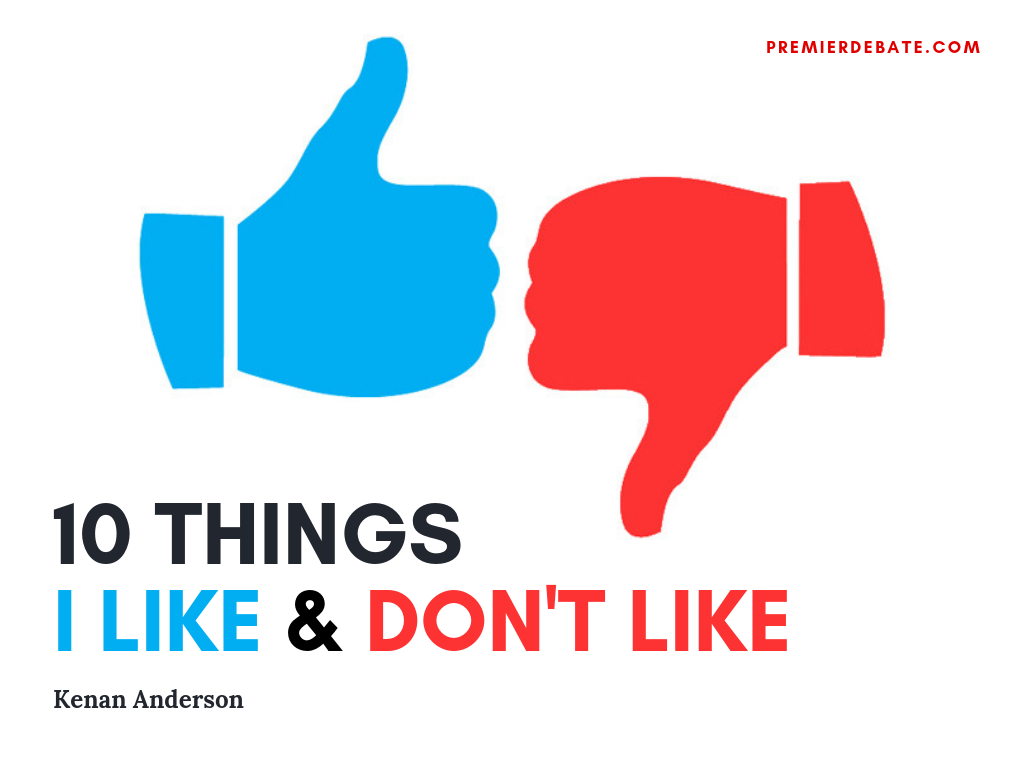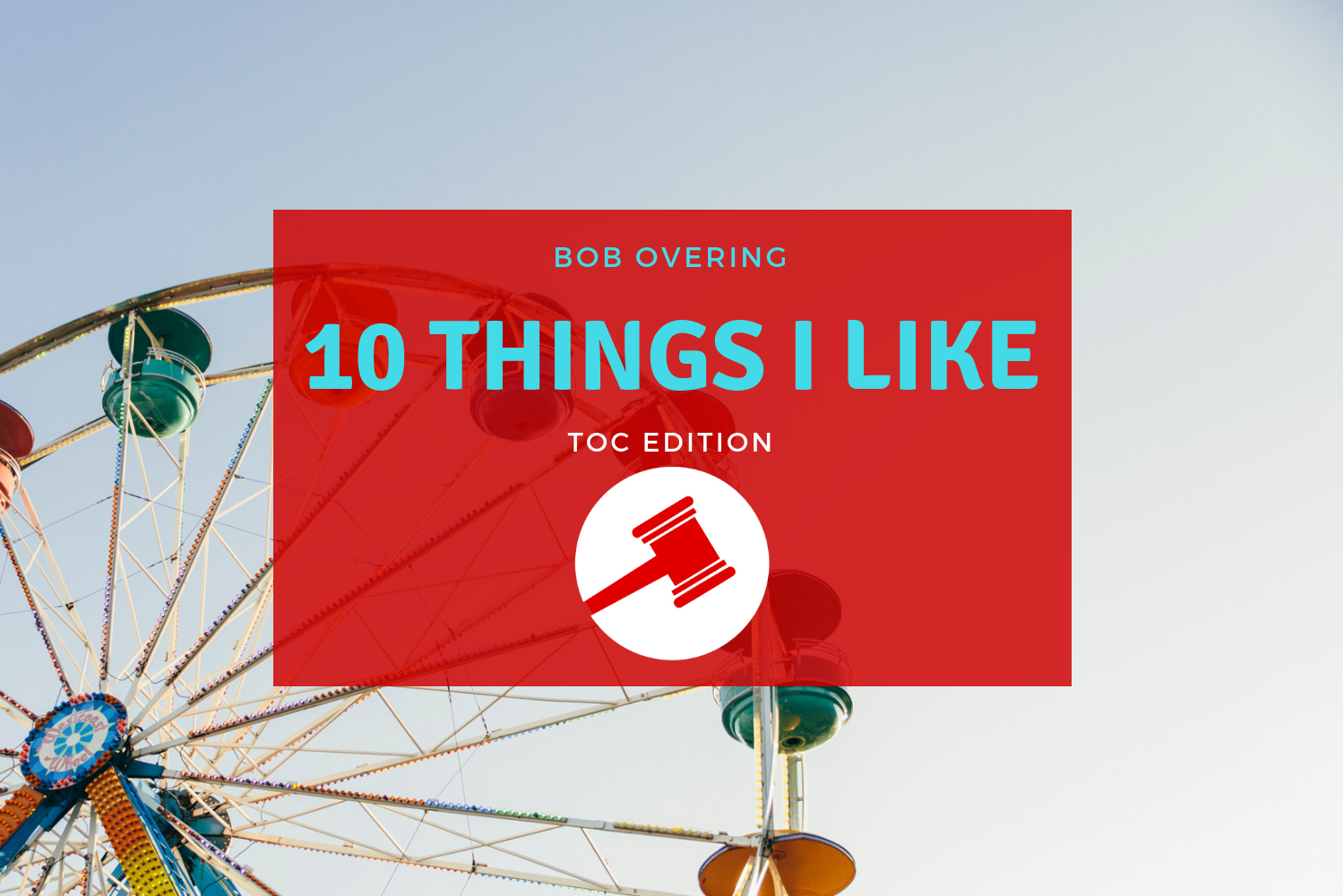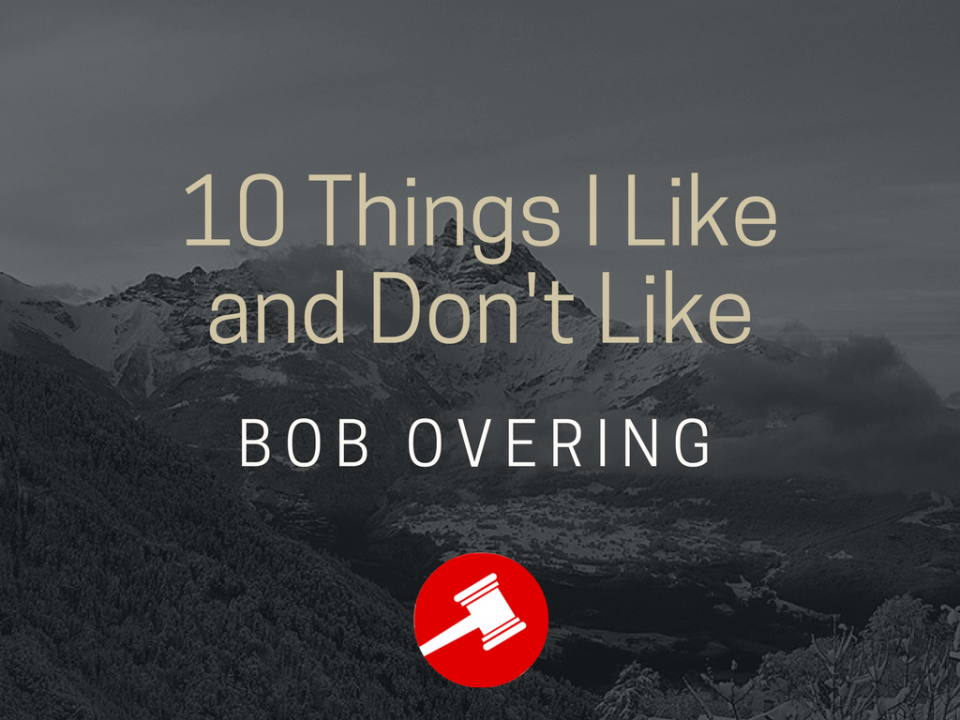10 Things I Like – Apple Valley ’19 (Kenan Anderson)

Wow – it has been a long time since I’ve judged a circuit debate round. The last true national circuit round I judged must’ve been at Harvard over 7 months ago. Alas, nothing lasts forever, and I had the pleasure of being able to return to my great home state of Minnesota and judge Varsity LD at Minneapple. It was a big adjustment back to circuit debate, but overall, I was pretty happy about it. Here are my 10 things I liked and didn’t like.
#1. Thinking Deeply About Climate Change
One issue that felt under-explored was the nitty-gritty and philosophical implications of climate change. For example, most debaters I judged just took it for granted that climate change caused extinction without justifying it rigorously. Not only does this leave strategic holes that can be exploited by smart opponents, but also there are lots of interesting implications around issues and discourse regarding climate change. To be clear, this is not a call to read policy backfiles about C02 being necessary to stop the ice age. But I hope as this topic develops students dig more into the policy and science behind climate change as well the critical and discourse implications of rhetoric that says climate change is inevitable or will cause extinction.
#2. The Minneapple is VERY well-run.
Now to be transparent, as an Apple Valley alumni, I might have some biases here. However, it’s objectively fairly impressive how smoothly the Minneapple runs. Rounds rarely if ever are delayed, and the entire tournament happens in less than 48 hours. For an octos-bid tournament of this size, it’s very impressive. Kudos to the tab staff, Apple Valley staff, and legions of volunteers.
#3. This Topic Is Better Than I Thought
When the topic was first released, I, like many, was wary about how it would fare in circuit debate. The aff’s impacts seemed too limited while the neg ground seemed initially non-existent. In fact, in an informal topic rating by Victory Briefs earlier this year fossil fuels received an average grade of C-, the lowest of all the potential topics on the list. Knowing this I went into the weekend braced for less than fantastic debates
However, I was pleasantly surprised by the quality of the debates I witnessed. I’m only one judge, and mutual preference judging meant I was generally judging fairly policy-focused debates, but overall I thought the topic was actually handled pretty well by most debaters. The neg managed to find some interesting ground regarding consumption subsidies like LIHEAP as well as well-tailored kritik links. And the aff was able to justify why subsidies specifically might have a significant impact on climate such as through international signaling or specifically harming natural gas. Overall the rounds were interesting and compelling to watch.
#4. New Novice Rule
The Minneapple has always been unique in being one of the few national tournaments to offer a Novice division. It’s an aspect of the Minneapple that I enjoyed both as a competitor in Novice back in 2014, but also heard positive feedback about from lots of coaches and fellow competitors. However, in light of a shrinking Novice Division over the last five years the Minneapple this year posted a special note regarding novice debate.
I encourage you to read the thoughtful post by the tournament staff but the short version is they have encouraged coaches to focus their novice preparation on core stock arguments, as opposed to more advanced varsity tactics. Additionally (and I suspect more controversially) they said they planned to include the following disclaimer on the online ballots for novice judges.
“In the novice division, debaters are expected to make arguments that are appropriate for their experience level. Judges should consider only arguments that, in their best judgement, are explained and packaged in a way that a first-semester novice could reasonably be expected to understand and effectively engage.”
I did not judge Novice and wasn’t in the same building as Novice LD so I didn’t get any feedback from judges about when/if they ended up applying this or if they thought it was necessary. I’m hoping to write more about my thoughts on improving novice debate in the future, but my gut inclination is this is a step in the right direction and that overly technical novice debate can drive down participation number and that we can dissuade it without harming technical debate on the circuit level.
#5. Award Ceremony
Another unique facet of the Minneapple is their fairly long (by circuit debate standards) award ceremony. While many tournaments only feature a brief ceremony for Varsity speaker awards, the Minneapple recognizes speaker awards in all three divisions of LD, as well as inviting all students who advanced to elimination rounds forward to be recognized by name and the classic forensics “single clap”. While some find this process long and tedious, it is a rare opportunity for the entire debate community to put aside prepping for the next round for a minute and to sit and recognize the success of other teams and programs across various divisions. While it does obviously require some time commitment, I would encourage other tournaments to try and adopt a similar ceremony to encourage more community and recognition.
#6. Minnesota Schools Performed Very Well
This is another one where my Minnesota biases might be showing, but overall Minnesota teams did incredibly well this year at the Minneapple. Four debaters from Minnesota advanced to outrounds, including one who made double-octofinals and Lakeville’s Logan Stenzel who made it all the way to the semi-finals! Going back over the last four years combined, only two Minnesota debaters had broken at the Minneapple, and none had gotten a bid. The last time a Minnesota debater made semi-finals of the Minneapple was in 2013![3] Overall, it’s awesome to see new teams and old teams begin to be more competitive on the circuit again.
#7. Friendly Atmosphere (Even Among Competitors)
During my tenure as a debater I felt that there was a lot of toxic behaviors that happened on tournaments ranging from more serious issues like intimidation of small schools, sexism, and racism, to minor things like an over-focus on competitive success rather than any number of other virtues or criteria. However, in my return to the circuit this year the Minneapple pleasantly surprised me with its friendly atmosphere both inside and outside of rounds. I witnessed debaters who had never met being kind and generous to each other in numerous ways and felt a lot less of the stress and hostility I’d felt and witnessed at past tournaments. Now my experiences weren’t the same as everybody else’s and debate is still a long way from being perfectly free of hostility and perfectly equitable, but I felt like this tournament gave me hope for the circuit in the future.
#8. Perks of Central Tournaments
Having spent almost all of last year judging exclusively smaller east coast tournaments like Princeton and Columbia, it was nice to attend a more centrally located tournament that drew a bigger and more regionally diverse body of competition. Other than Glenbrooks (and national tournaments like TOC) the Minneapple is one of the best tournaments to see debaters from all across the country, whether it’s Texas, Florida, or the East and West Coasts. This not only helps improve cross-pollination of arguments and styles but also is just a fun opportunity to meet and see friends from across the country.
Additionally, this diversity isn’t limited to prelims. Quarter-finals of the Minneapple saw eight debaters representing six different states, with only Texas holding more than one slot. And among these states, we saw every major region had at least one representative. It’s always good to see a diversity of arguments and regions becoming successful.
# 9. Decision Time Rule
The Minneapple followed the lead of other tournaments by implementing decision time rules this year, a move that I think is very smart. Another step the tournament took to improve decision times was to display to a judge where they ranked in terms of decision times after submitting a decision for that round. For example, after Round 1 it told me I was the 34th out of 75 judges to submit my ballot.
As someone who is interested in behavioral economics, I think this is a brilliant move to encourage the bad form of delays caused by judges who simply waste time during RFDs or are overly cautious, while not being too much of a disincentive in order to dissuade judges from taking the necessary time to effectively adjudicate their rounds. Additionally, an added perk of timely decisions is coaches and students have more time to prep for their next round.
# 10. Lots of Seeding Upsets
If you’re a debater who consistently breaks, but tends to struggle in out rounds don’t worry! The Minneapple proves that major upsets are possible. I won’t highlight any particular round here, but the average seed of the quarter-finalists was 20.25. To put that in perspective the other octo-bid tournaments this season hadhad a collective average of 12.4.[1] This is probably a mixed message with two parts. First, debate is always uncertain so you should never feel like any elite debater is “unbeatable”. Second, this is another reason to be fairly skeptical of speaker points, as they’re obviously not effective at sorting the “best” debaters in the way they are designed to.[2]
[1] Valley (14.875), Greenhill (9.625), Bronx (10.25), St. Marks (14.875)
[2] If you are looking for ways to reform speaker points, check out Opponent Adjusted Performance Score
[3] This is a correction. An earlier version of this article claimed a Minnesota debater hadn’t made the semi-finals in over 10 years. Props to Jason Smith for pointing out Leah Shapiro made semis in 2013.


